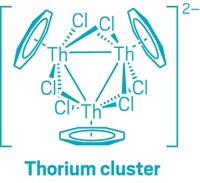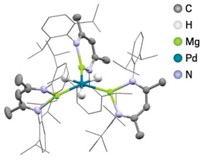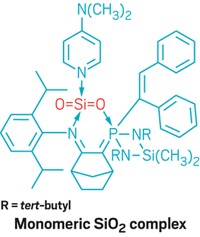Advertisement
Grab your lab coat. Let's get started
Welcome!
Welcome!
Create an account below to get 6 C&EN articles per month, receive newsletters and more - all free.
It seems this is your first time logging in online. Please enter the following information to continue.
As an ACS member you automatically get access to this site. All we need is few more details to create your reading experience.
Not you? Sign in with a different account.
Not you? Sign in with a different account.
ERROR 1
ERROR 1
ERROR 2
ERROR 2
ERROR 2
ERROR 2
ERROR 2
Password and Confirm password must match.
If you have an ACS member number, please enter it here so we can link this account to your membership. (optional)
ERROR 2
ACS values your privacy. By submitting your information, you are gaining access to C&EN and subscribing to our weekly newsletter. We use the information you provide to make your reading experience better, and we will never sell your data to third party members.
Physical Chemistry
Boron’s Ambidextrous Ways
Chemical Bonding: A boron dicarbonyl donor-acceptor compound has the main-group element behaving like a transition metal
by Stephen K. Ritter
June 17, 2015
Chemists have built a new compound in which boron donates and accepts electron pairs when binding two carbon monoxide molecules, a peculiar situation that has the nonmetal main-group element acting like a transition metal (Nature 2015, DOI: 10.1038/nature14489).
Before now, no elements outside of the transition metals in groups 4 to 12 of the periodic table have ever been observed to react directly with two or more CO molecules. Holger Braunschweig of Julius Maximilian University, in Würzburg, Germany, led a team that figured out a way to make it happen.
The researchers first prepared a molybdenum pentacarbonyl complex bearing a borylene ligand, RBMo(CO)5, where R is a superbulky 2,6-di(2,4,6-triisopropylphenyl) substituent. After refluxing the complex in a CO-saturated benzene solution, they removed Mo(CO)6 and isolated blue crystals of the borylene dicarbonyl compound, RB(CO)2.
Boron has only three valence electrons and is known for the sometimes quirky ways it forms bonds. In borylenes, boron uses one electron to bond with the bulky substituent. The remaining two electrons form a lone pair in one orbital, and two orbitals remain vacant. Boron can therefore accept electrons from two CO molecules (σ bonding) as it contributes the lone pair to the CO molecules (π backbonding). This donor-acceptor behavior mimics that of transition-metal carbonyl complexes.
Computational chemist Gernot Frenking of Philipps University, in Marburg, Germany, was part of a team that previously predicted that a borylene with transition-metal-like properties might be possible. “I did not expect that it would be so stable—and so easy to make!” Frenking tells C&EN. Frenking calls the boron bonding situation “mind-boggling,” and he predicts that more boron surprises are in store.






Join the conversation
Contact the reporter
Submit a Letter to the Editor for publication
Engage with us on Twitter